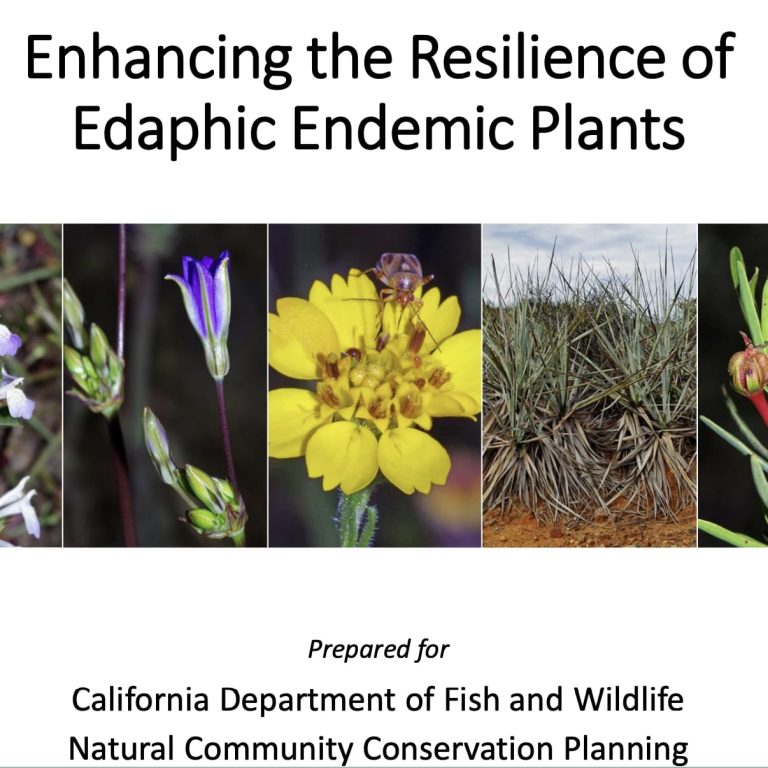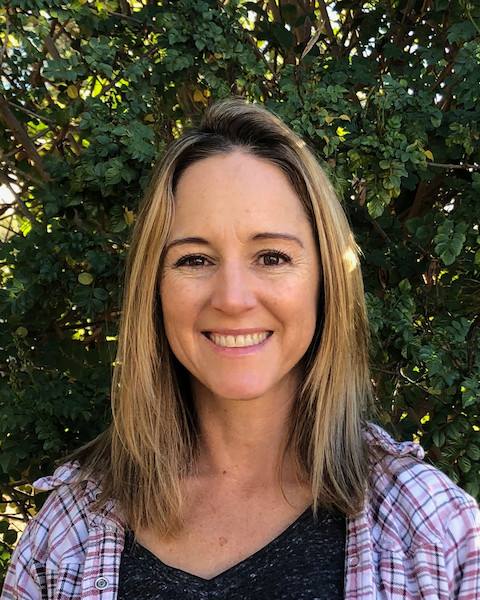This study presents an approach for identifying and describing geographic areas that support edaphic endemic species and their habitat in a design that enhances resilience and provides opportunities for shifting distributions. We developed conceptual models to inform field studies and management, refined soils and vegetation attributes, and assessed regional population structure and threats. We used results to suggest prioritized locations for surveys, management, potential translocation, and additional conservation or acquisition. The U.S. Geological Survey (USGS) and San Diego Management and Monitoring Program (SDMMP) modeled suitable habitat for the target species under current and future climate scenarios; model results are in a separate report and referenced in this document, as appropriate. Target species include San Diego thornmint (Acanthomintha ilicifolia), thread-leaved brodiaea (Brodiaea filifolia), Otay tarplant (Deinandra conjugens), Dehesa nolina (Nolina interrata), and Parry’s tetracoccus (Tetracoccus dioicus).
All target species occur on nutrient poor soils, and each species is associated with a unique suite of physical and chemical soil properties. San Diego thornmint is restricted to clay soils with low sand content and has a low tolerance to metals. Thread-leaved brodiaea occurs on clays in a narrow pH range, and is tolerant to high sodium soils but avoids alkaline soils. Otay tarplant has a positive relationship with clay, sodium, magnesium, and low fertility soils. Dehesa nolina prefers soils with high pH and calcium levels, and avoids sites with high copper levels. Parry’s tetracoccus occurs on soils with higher metal concentrations than surrounding areas. We provide a range of variables for each species that can inform site selection for management and restoration. For example, testing soil before enhancing or augmenting small occurrences will allow us to locate suitable sites and eliminate or remediate unsuitable sites with remnant populations before investing management funds.
We used distribution data, habitat suitability models, genetic principles and information to develop regional population structures for each target species. We then identified populations or population groups important for long-term resilience and locations where conservation and management actions would be most beneficial.
We identified 17 population groups for San Diego thornmint, 6 for thread-leaved brodiaea, 13 for Otay tarplant, and 4 each for Dehesa nolina and Parry’s tetracoccus. We also identified gaps in connectivity within and between population groups, and opportunities to restore habitat in those gaps and improve population resilience. Recommended actions vary by species:
- For San Diego thornmint, thread-leaved brodiaea, and Otay tarplant, conserve and survey additional habitat, but focus management primarily on enhancing existing occurrences, and expanding and/or augmenting selected small occurrences.
- For Dehesa nolina, survey and conserve high suitability habitat east of the current distribution.
- For Parry’s tetracoccus, conserve known occurrences and survey for potential new ones between all population groups.
Habitat is predicted to decline in the future for all target species under various climate scenarios, although the amount of predicted habitat remaining varies among species. San Diego thornmint and Parry’s tetracoccus have the largest amounts of predicted future suitable habitat, Dehesa nolina and thread-leaved brodiaea had small amounts of predicted future suitable habitat, and Otay tarplant had no predicted future suitable habitat. We recommend conserving future predicted suitable habitat within or beyond San Diego County, and experimentally translocating target species into this habitat as climatic conditions change if monitoring indicates further species declines.




